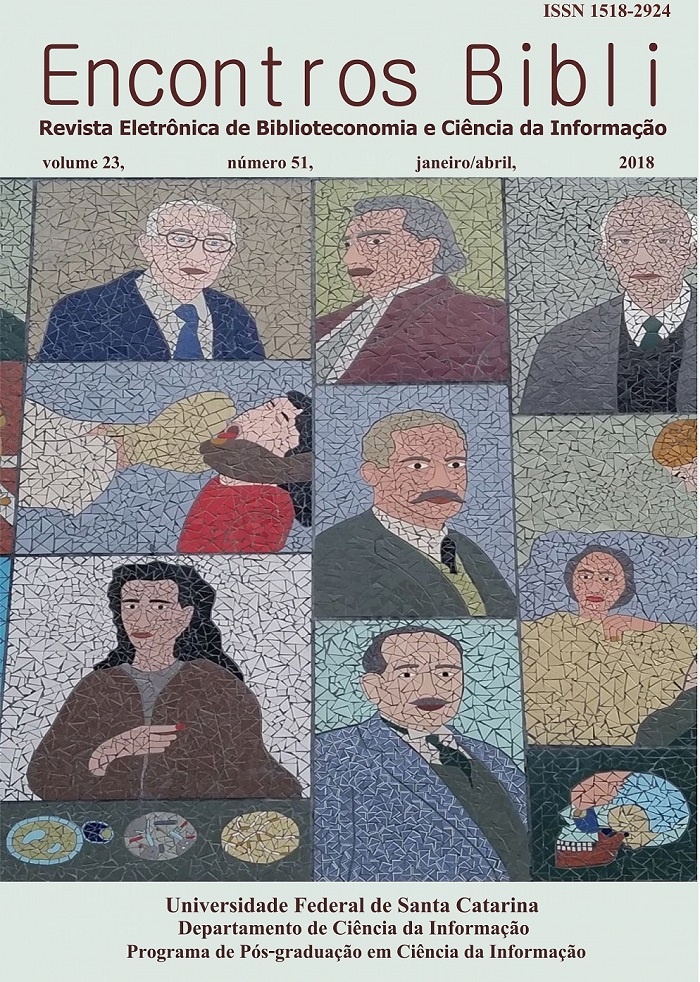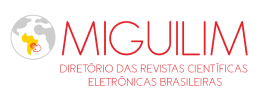Licensing and commercialization indexes of technological innovation nucleus based on international good practices
DOI:
https://doi.org/10.5007/1518-2924.2018v23n51p95Keywords:
Technology licensing index, Technology commercialization index, Performance indicators, Technology transfer officeAbstract
The use of indexes and performance indicators can help in decision-making, the definition of strategic actions in the planning, scenario display (current and future) and the results of operations of Technological Innovation Nucleus (NIT). This current article to present, characterize and describe the technology licensing index and technology commercialization index, based on experience from seven universities abroad. For this, an extensive literature review of international best practices in intellectual property management and technology transfer and the interviews was conducted in two US universities, one from Spain, one from Portugal, one from Scotland and two in England which allowed the identification of various indexes and performance indicators. The importance of the issue is justified by the possibility of using them to understand, assess and monitor the evolution of the industry-university technology transfer process. In addition, the study has great value to understand the actions taken by the NIT, contribute to the formulation of public policies (internal and universities), with the creation of a favorable environment for synergy and cooperation with business, and finally as a process of accountability to society, demonstrating the achievements of technology innovation nucleus.Downloads
References
ABRAMS, I.; LEUNG, G.; STEVENS, A. J. How are U.S. technology transfer offices tasked and motivated: is it all about the money?. Research Management Review, v. 17, n. 1, p. 1-34, Fall/Winter, 2009.
ARUNDEL, A.; BORDOY, C. Developing internationally comparable indicators for the commercialization of publicly-funded research. Netherlands: UNU-MERIT (United Nations University, 2006, 18p.
AUTM - Association of University Technology Managers. Licensing Income on University Technology Transfer. 2007. Disponível em: <http://www.autm.net>. Acesso em: 14 fev. 2012.
AUTM - Association of University Technology Managers. Manual prático de transferência de tecnologia. Porto Alegre: EDIPUCRS, 2010, v.1 e v.2, 264p.
BALDINI, N. University patenting and licensing activity: a review of the literature. In.: Research Evaluation, v.15, n.3, p.197-207, 2006.
BRAY, M. J.; LEE, J. N. University revenues from technology transfer: licensing fees vs. equity positions. Journal of Business Venturing, v. 15, n. 5-6, p.385–392, 2000.
BUENO, A. A gestão de núcleos de inovação tecnológica baseada em índices e indicadores de desempenho a partir de boas práticas internacionais e estudos de casos nacionais. 2016. 227f. Tese. Doutorado apresentado ao Programa de Pós-Graduação em Engenharia de Produção da Universidade Federal de São Carlos. São Carlos-SP: UFSCar, 2016.
CHAPPLE, W. et al. Assessing the relative performance of U.K. university technology transfer offices: parametric and non-parametric evidence. Research Policy, v. 34, n. 3, p. 369-384, 2005.
COLOMBO, D.; D’ADDA, D.; PIVA, E. The contribution of university research to the growth of academic start-ups: An empirical analysis. The Journal of Technology Transfer, v.35, n.1, p.113–140, 2010.
CYSNE, F. P. Transferência de tecnologia entre universidade e indústria. Encontros Bibli: Revista Eletrônica de Biblioteconomia e Ciência da Informação, v. 10, n. 20, 2. sem., 2005.
GARCIA, R. L.M. Eficiência em órgãos públicos: uma proposta de indicadores. Rifo de Janeiro: FGV, 2008.
JENSEN, R.; THURSBY, M. Proofs and prototypes for sale: the tale of university licensing. American Economic Review, v. 91, n. 1, p. 240-259, 2001.
LINK, A. N., SCOTT, J. T. Opening the ivory tower's door: An analysis of the determinants of the formation of U.S. university spin-off companies. Research Policy, v. 34, n. 7, p. 1106-1112, 2005.
Mazzucato, M. O estado empreendedor: desmascarando o mito do setor público vs. setor privado. São Paulo: Portfolio-Penguin, 2014.
MUSTAR, P.; WRIGHT, M.; CLARYSSE, B. University spin-offs firms: lessons from the ten years of experience in Europe, Science and Public Policy. Research Policy, v. 35, n. 2, p. 67-80, 2008.
RASMUSSEN, E.; MOEN, O.; GULBRANDSEN, M. Initiatives to promote commercialization of university knowledge. Technovation, v. 26, n. 4, p. 518–533, 2006.
ROGERS, E. M., TAKEGAMI, S., YIN, J.; Lessons learned about technology transfer. Technovation, v. 21, n. 4, p. 253-261, 2001.
SANTOS, M.E.R.; SOLLEIRO, J.L. Boas práticas de gestão em escritórios de transferência de tecnologia. In: Simpósio de Gestão da Inovação Tecnológica, 23, 2004. Curitiba, Anais... São Paulo: USP/PGT, 2004. p.785-800.
SICHE, R. et al. Índices versus indicadores: precisões conceituais na discussão da sustentabilidade de países. Ambiente & Sociedade, v. 10, n. 2, p. 137-148, 2007.
SIEGEL, D.S.; VEUGELERS, R.; WRIGHT, M. Technology transfer offices and commercialization of university intellecutal property: performance and policy implications. Oxford Review of Economic Policy, v. 23, n. 4, p.640–660, 2007.
TAKASHINA, N. T.; FLORES, M. C. X. Indicadores da qualidade e do desempenho: como estabelecer metas e medir resultados. Rio de Janeiro: Qualitymark, 1996.
TERRA, B. A transferência de tecnologia em universidades empreendedoras: um caminho para a inovação tecnológica. Rio de Janeiro: Qualitymark, 2001.
THOMSON REUTERS. The World University Rankings 2011-2012. 2012. Disponível em: <http://www.timeshighereducation.co.uk/world-universityrankings/2011-2012/top-400.html>. Acesso em: 04 fev. 2012.
TORKOMIAN, A. L. V. Transferência de tecnologia, inovação tecnológica e desenvolvimento. In: AZEVEDO, A. M. M.; SILVEIRA, M. A. (Org.). Gestão da sustentabilidade organizacional: desenvolvimento de ecossistemas colaborativos. Campinas: CTI, 2011. p. 101-114.
VINIG, T.; RIJSBERGEN, P. Determinants of University Technology Transfer: comparative study of US, Europe and Australian Universities. SSRN: 2009. Disponível em: <http://ssrn.com/abstract=1324601>. Acesso em: 28 abr. 2015.
VINIG, T.; LIPS, D. Measuring the performance of university technology transfer using meta data approach: the case of Dutch Universities. The Journal of Technology Transfer, v. 40, n. 6, p. 1034-1049, 2015.
VINIG, T.; RIJSBERGEN, P. Determinants of University Technology Transfer: comparative study of US, Europe and Australian Universities. SSRN: 2009. Disponível em: <http://ssrn.com/abstract=1324601>. Acesso em: 28 abr. 2015.
YIN, R. K. Estudo de Caso: planejamento e métodos. 2. ed. Porto Alegre: Bookman, 2001.
Published
How to Cite
Issue
Section
License
Copyright (c) 2017 Alexandre Bueno, Ana Lúcia Vitale Torkomian

This work is licensed under a Creative Commons Attribution 4.0 International License.
The author must guarantee that:
- there is full consensus among all the coauthors in approving the final version of the document and its submission for publication.
- the work is original, and when the work and/or words from other people were used, they were properly acknowledged.
Plagiarism in all of its forms constitutes an unethical publication behavior and is unacceptable. Encontros Bibli has the right to use software or any other method of plagiarism detection.
All manuscripts submitted to Encontros Bibli go through plagiarism and self-plagiarism identification. Plagiarism identified during the evaluation process will result in the filing of the submission. In case plagiarism is identified in a manuscript published in the journal, the Editor-in-Chief will conduct a preliminary investigation and, if necessary, will make a retraction.
This journal, following the recommendations of the Open Source movement, provides full open access to its content. By doing this, the authors keep all of their rights allowing Encontros Bibli to publish and make its articles available to the whole community.
Encontros Bibli content is licensed under a Creative Commons Attribution 4.0 International License.
Any user has the right to:
- Share - copy, download, print or redistribute the material in any medium or format.
- Adapt - remix, transform and build upon the material for any purpose, even commercially.
According to the following terms:
- Attribution - You must give appropriate credit, provide a link to the license, and indicate if changes were made. You may do so in any reasonable manner, but not in any way that suggests the licensor endorses you or your use.
- No additional restrictions - You may not apply legal terms or technological measures that legally restrict others from doing anything that the license permits.

























